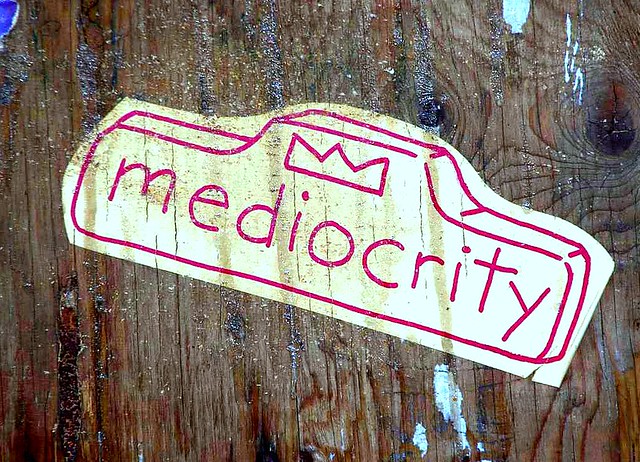Mediocrity Is Your Biggest Conference Competitor
Your real conference competition is not that event held six months after yours.
Nor is your competitor time, money and resources. Your real competitor is mediocrity to paraphrase authors Karin Hurt and David Dye.
You’re In A Difficult Position: Look Backwards Or Forwards For Programming?
Today’s technology driven, hyper-connected, instant gratification, real-time world puts you as a conference organizer in a difficult position. You’re expected to deliver highly participatory, forward-thinking, experience-driven, sensory-laden, learner-centered, performance-focused conferences that move the needle for your customers.
Too often our current conference planning processes focus on the greatest common denominator. We promote and sell last-year’s best practices and success. We’re outdated from the start. We look backwards.
We also strive to offer something for everyone at our event. Trying to be all things to all people melts excellence and emerging practices into commonplace, ordinary averageness.
We aggregate speaker proposals. We let volunteers rank them on what they know or who they personally like. We roll the dice that what was submitted actually meets our core customers’ needs.
We assume the more people involved in designing the program and choosing the experts and content, the more customers we’ll attract.
Well, it doesn’t work that way. It leads to mediocrity.
The Devil’s In The Details Mindset
As a conference organizer, you may even lose your soul to logistics, to-do lists and ever increasing detailed tasks. You become hell-bent on ensuring that every precise meeting specific is perfect. From registration to trade show to contracts to BEOs to room set efficiencies to audio visual equipment, your attention is on the perfected particulars, the stuff, the objects.
This drive to make sure that the logistics are right causes you to forget who the conference is for—people! You begin to treat people as objects. So your registrants lose their souls to your hyper- and laser-focus on meeting minutiae. You’ve succumbed to mediocrity because your event is perfect as far as logistics are concerned. However, your conference experience lacks depth, connection, conviction, emotion and purpose. It runs smoothly as planned. But it misses the mark to help your customers advance in their jobs.
Meet Expectations With Dull Drab Staleness Or Originality?
So consider these questions:
- Is your conference designed to give your customers the experience they expect?
Word of caution here. If you plan to meet their expectation of just one or two takeaways, you’ve already lowered your conference standards to average at best. - Have you normalized conference mediocrity as acceptable?
We’ve all heard conference participants say if they can just get one or two takeaways, it was worth it. Wow, the bar is really low. And that’s not good. We have altered our customers’ and leaders’ standards of what is acceptable (tolerable?) and what is good for conferences. The standard of good has become good enough which translates into mediocre. We have attended and planned good enough conferences so much that we have accepted it is as normal. We even score conferences on satisfaction rates–which does not lead to change, learning or loyalty. (Hat tips Chris Guillebeu for challenging us to then beyond average as acceptable). - Have you lowered your participants’ conference expectation so much that they expect triviality?
The Choice To Be Better Than Status Quo Starts With You
Great conference experiences are not just a consequence of good intentions, flawless logistics, attentive committee management and meeting deadlines. It requires reimagining, recreating and rethinking every aspect of your conference participants’ interaction with you, your company, your conference venue, your speakers, and their peers.
This means you need to refocus on your conference strategy! Then align that strategy with your customers’ needs.
Be forewarned! It’s not about acquiescing to everything your conference customers ask for and want. It’s about being proactive, not reactive. It involves getting ahead of your customers’ needs and then delivering on stellar promises. It’s about focusing on conference core purpose. It’s about advancing the profession or industry.
Remember, “Wow, that registration process was flawless and I can’t wait for next year’s event so I can experience meeting logistics perfection again,” said no one!
So how do we avoid planning conference routineness and commonness? What steps do you take to avoid creating mediocre conference experiences?


